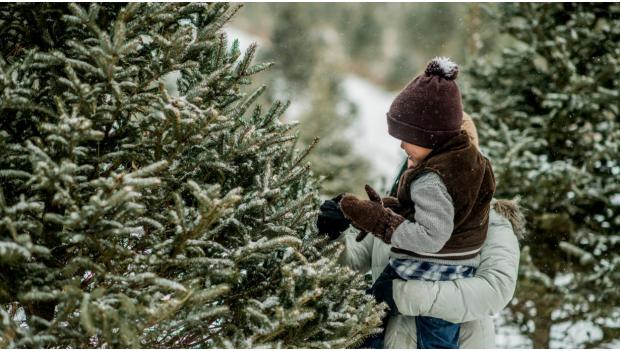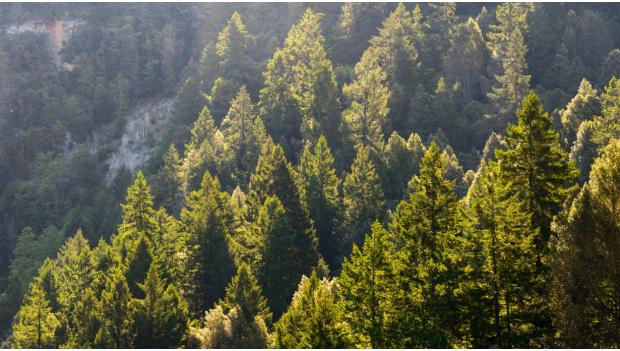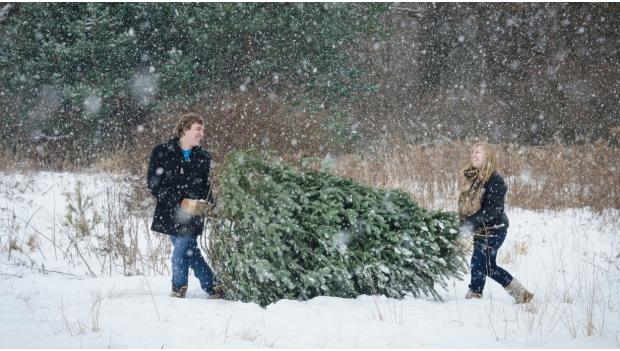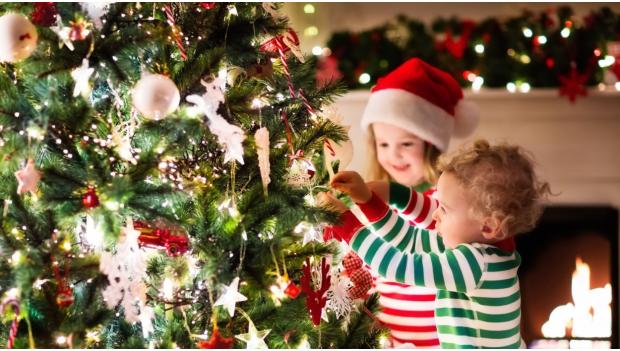
Some of the most cherished holiday memories come from gathering family and friends around a fragrant evergreen tree to sip eggnog and string twinkling lights across the boughs. Drape keepsake family ornaments from top to bottom, add a carpet of beautifully wrapped boxes around the base and you have a majestic centerpiece for your holiday celebrations.
Bypassing the Christmas tree lots to cut down your own tree not only gives you a longer-lasting tree, but can be good for the environment. Trees need to be thinned at times, and thinning younger trees that fit in your home promotes healthy development of the forest. Wildlife and plants that grow on the forest floor benefit as well. But there are rules and zone restrictions you need to know before you go.
Learn how and where to cut down your tree for healthy forests and holiday fun.
1. Why Cut Your Holiday Tree in Nature?
An annual woodland trek in search of the perfect holiday tree is a workout, treasure hunt and chance to reconnect with nature, family and friends all rolled into one. If you’re lucky enough to have fresh snowfall, add snowshoes or cross country skis for even more adventure.
Cutting down your own holiday tree gives remaining trees in the forest room to grow and reduces competition for nutrients, sunlight and water, making for more robust trees that keep our air and water clean. Harvesting your tree also lets sunlight reach the forest floor, improving food and habitat for deer, birds of prey, songbirds and small mammals.
2. Where You Can Cut
National and state forests, created to be working forests for recreation, scenic beauty and wildlife habitat, also exist for harvesting and replenishing renewable resources. This includes trees, and these public lands are the best place to cut yours during the holidays. Because national and state forests are often adjacent to national and state parks, check with local rangers to determine forest boundaries and regulations before you leave home. A good first step is to research national forests and agencies that manage state forests online, then make a call to get more information.
3. Where You Can’t Cut
Cutting your own tree is not allowed on many public lands. National parks and state parks exist to preserve history and natural beauty, so cutting trees is not only against the rules, it comes with severe fines and penalties. The same is true for national monuments and national seashores.
Some, but not all, national wildlife refuges and lands managed by the Bureau of Land Management allow holiday tree cutting. Once you’ve picked potential sites to cut your tree, check with your local authorities before finalizing your plans.

Recommended: Holiday Gift Guide for Adventurous Kids
4. Get a Permit
Wherever you decide to cut your tree, you’re going to need a permit. There’s typically a limit to the number of permits you can get, and fees are minimal. Keep your permit with you at all times and attach it to your tree while you transport it back home. And you can save money by making it a family adventure. Fourth graders can get a free holiday tree permit through the Every Kid in a Park program.
5. Be Wilderness Ready
Cutting your own tree means a trek into the wild. Make sure everyone in your group is prepared to brave the elements by dressing in layers, wearing waterproof hiking boots and bringing snacks and water. Let someone know your route ahead of time, and check the weather forecast, driving conditions and road closures. Be aware that rain at home can change to ice and snow at higher elevations.
6. Tree Types and Regions
Pine, spruce and fir trees make up the bulk of America’s holiday trees because of their strong fragrance, resistance to dropping needles and stiff branches that hold decorations well. Douglas firs are one of the most popular varieties, grown in the western states and shipped across the country. Appalachia’s blue-green Fraser fir and the balsam fir, a Northeastern native, are also top choices.
Blue spruces from Wyoming and Colorado are prized for their symmetry and ability to hold their needles. Bright green Scotch pines hold their needles even when they’ve dried out and are the hardiest variety, making them the most popular choice in the U.S.

Recommended: Cool Winter Cabin Rentals Close to Ski Resorts
7. Choose Carefully
Before you pick up your saw, make sure the tree you’ve picked out doesn’t show signs of storm, fire or insect damage. Pass on trees with nests in the branches or trunk, or trees with burrows near the roots.
Your top choice should be at least 200 feet from main roads, recreation sites and campgrounds, and outside of stream and lake buffer zones. The tree trunk needs to be six inches or less in diameter and less than 12 feet tall. Choose one in an overcrowded stand of trees to thin the area, and leave a stump less than five inches tall after you cut.
8. Go Natural on Decorations
Weave an outdoor theme throughout your holiday with ornaments made from natural materials. Glitter-dusted pine cones, sprigs of bright, red berries, popcorn strings and oranges dotted with cloves make a festive display. Hang plain or painted seashells from the branches and use boughs trimmed while you were shaping your tree to decorate mantles, bookcases and stair rails.
9. Tree TLC
Keep your freshly cut tree healthy by putting the trunk in water as soon as you get home. Your tree stand should hold one quart of water per inch of stem diameter and stay filled at all times. The outer bark absorbs the most water, so leave the entire trunk intact. Keeping the tree away from heaters, fireplaces and sunlight will help it last longer, and miniature lights are the best choice for sparkle without the heat of bigger bulbs.

Recommended: 9 Dreamy Winter Wonderland Hikes
10. Recycle and Replant
A lasting benefit of live holiday trees is that they’re 100 percent recyclable. Consider mulching the tree and spreading the chips in your garden. Or put the tree in your backyard with orange slices and popcorn to provide food and shelter for birds. Check with local environmental organizations to contribute your tree to erosion barrier areas along lakes and rivers, or to fish feeder sites in ponds.